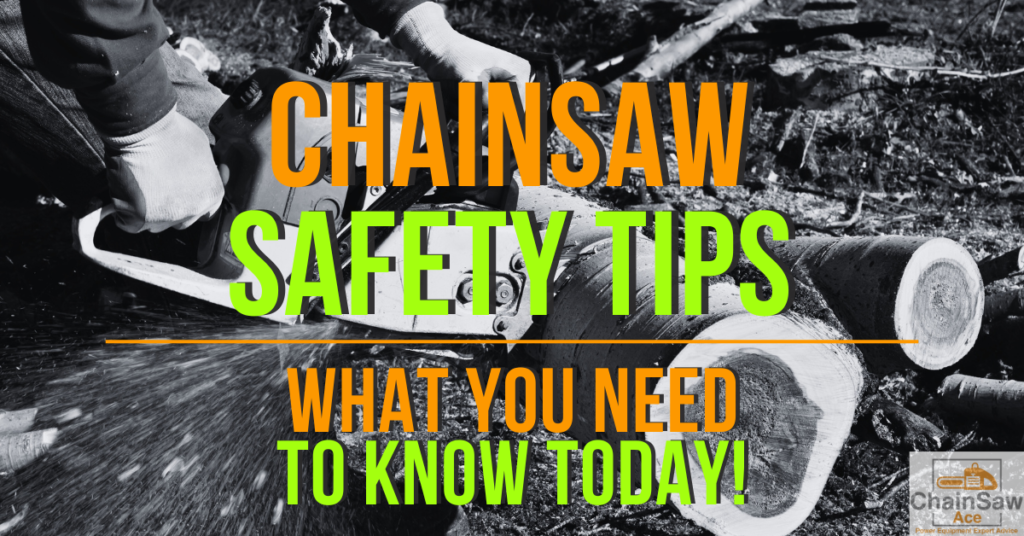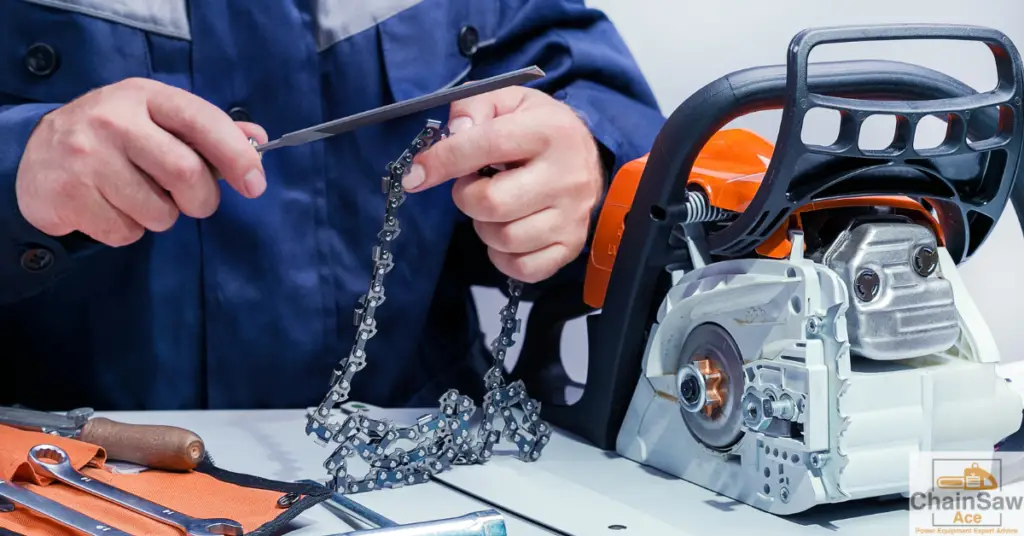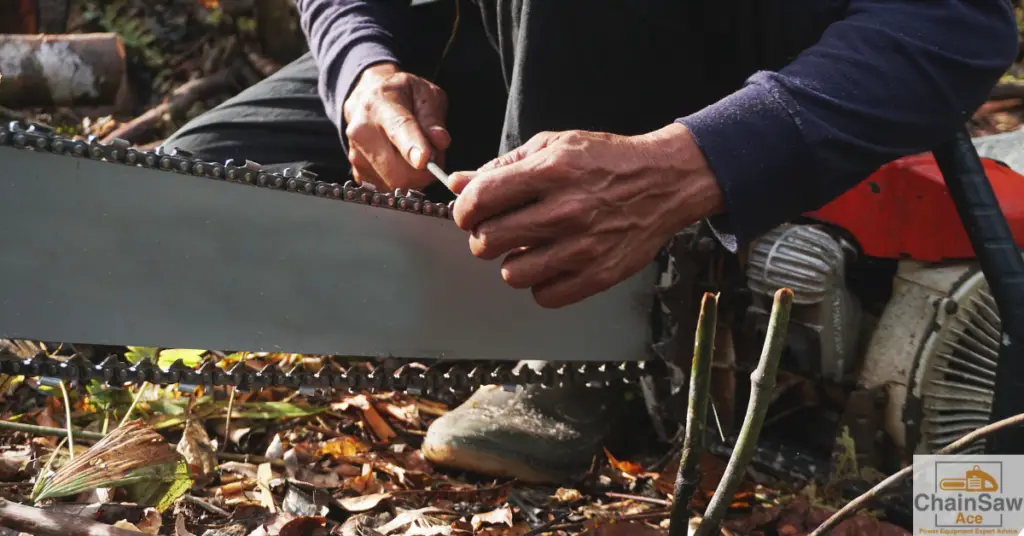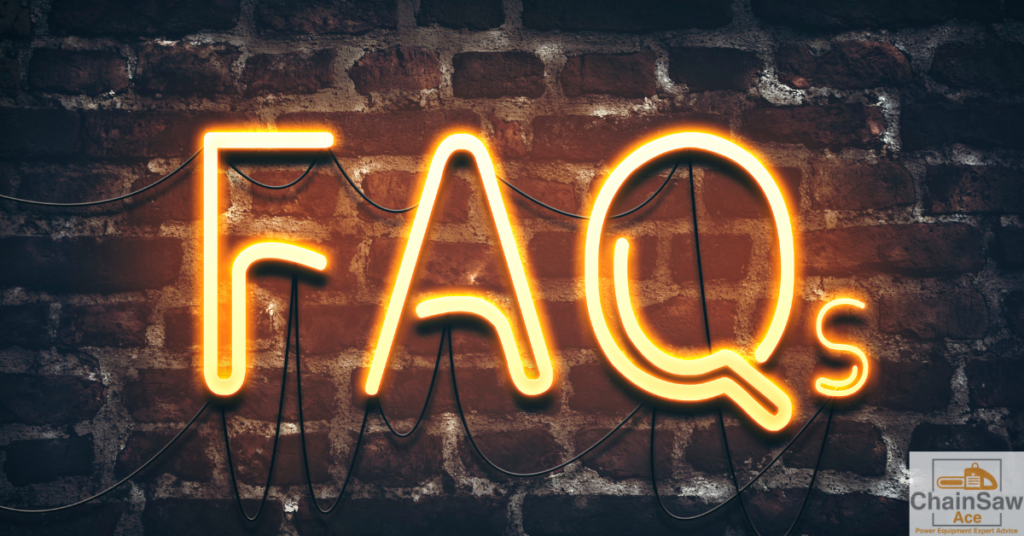
Chainsaws are powerful and essential tools for many jobs, such as landscaping, forestry, and construction. However, they can also be dangerous if not used correctly.
This article will provide you with essential chainsaw safety tips, techniques, and information to help you use your chainsaw safely and effectively.
- Personal Protective Equipment (PPE)
- Understanding the Chainsaw
- Proper Chainsaw Techniques
- Chainsaw Maintenance
- Avoiding Common Chainsaw Accidents
- Occupational Safety and Health Administration (OSHA) Guidelines
- Working with Branches Under Tension
- Maintaining Good Balance and Footing
- Wrapping Up
- Frequently Asked Questions
- What are six safety tips for using chainsaws?
- What are the most common chainsaw accidents?
- What should you not do with a chainsaw?
- How can I identify branches under tension?
- What are some examples of proper personal protective equipment (PPE) for chainsaw users?
- What is the importance of chainsaw maintenance?
- What are some tips for maintaining good balance and footing while using a chainsaw?
- What is the role of the Occupational Safety and Health Administration (OSHA) in chainsaw safety?
- What are some techniques for safely cutting branches under tension?
Personal Protective Equipment (PPE)
Essential PPE for chainsaw safety
To minimize the risk of injury, it is crucial to wear proper personal protective equipment (PPE) while using a chainsaw. Some essential PPE items include:
- Safety helmet
- Eye protection (safety glasses or goggles)
- Hearing protection (earplugs or earmuffs)
- Protective gloves
- Cut-resistant chaps or trousers
- Steel-toe boots
| Image | Title | Price | Prime | Buy |
|---|---|---|---|---|
 Top
Top | Forestry Safety Helmet Chainsaw Helmet with Mesh Face Shield and Ear Muffs 3 in 1 Forestry Hard Hat | PrimeEligible | Buy Now | |
 Top
Top | Dewalt DPG54-1D Protector Clear High Performance Lightweight Protective Safety Glasses with Wraparound Frame | PrimeEligible | Buy Now | |
 Top
Top | Vgo... Chainsaw 12-Layer Saw Protection on Both Hands Cow Leather Gloves (1 Pair,Size M, Orange, CA9760) | PrimeEligible | Buy Now | |
 Top
Top | ZELARMAN Chainsaw Chaps 8-Layer Protective Apron Wrap Adjustable Chainsaw Pants/Chap for Loggers Forest Workers Class A | PrimeEligible | Buy Now | |
 Top
Top | VIKING Class 2 Ultra Flexible Chainsaw Boots - Protective Grade 1 Steel Toe Safety Shoes For Men with Slip-Resistant Soles, Black/Orange - 12 M US | PrimeEligible | Buy Now | |
 | 17" Blank Duffle Bag Duffel Bag Travel Size Sports Durable Gym Bag (Orange) | PrimeEligible | Buy Now |
Importance of wearing PPE
Wearing PPE is critical for ensuring your safety during chainsaw operation. These items protect you from potential hazards such as flying debris, noise, and accidental contact with the chainsaw chain.
Understanding the Chainsaw

Components of a chainsaw
A chainsaw consists of several components, including the engine, chain, bar, handles, and controls. Familiarizing yourself with these components is essential for safe and efficient operation.
Chainsaw safety features
Modern chainsaws come with various safety features to minimize the risk of accidents. Some key chainsaw safety features include:
- Chain brake
- Throttle lock
- Chain catcher
It’s essential to understand how these features work and ensure they are functioning correctly before operating your chainsaw.
Proper Chainsaw Techniques
Cutting techniques
Proper cutting techniques are crucial for safe chainsaw operation. Some essential tips for cutting with a chainsaw include:
- Use both hands to operate the chainsaw
- Keep a firm grip on the chainsaw handles
- Maintain a stable stance with your feet shoulder-width apart
- Cut with the lower portion of the bar, avoiding the tip to prevent kickback
Encircling grip and cutting control
Using an encircling grip, where all fingers and the thumb wrap around the handles, provides better control and stability during chainsaw operation. Additionally, maintaining cutting control helps ensure safety by preventing accidental contact between the chainsaw chain and your body.
Chainsaw Maintenance

Importance of regular maintenance
Regular chainsaw maintenance is crucial for optimal performance and safety. A well-maintained chainsaw is less likely to malfunction, reducing the risk of accidents and injuries.
Tips for maintaining your chainsaw
To keep your chainsaw in good working condition, follow these maintenance tips:
- Regularly clean the chainsaw, removing debris and dirt
- Inspect the chain for wear and proper tension
- Check the bar for damage and ensure it’s properly lubricated
- Inspect and replace damaged or worn parts as needed
- Keep the air filter clean and replace it when necessary
- Follow the manufacturer’s recommendations for routine maintenance
Avoiding Common Chainsaw Accidents

Kickback prevention
Kickback is one of the most common causes of chainsaw accidents. It occurs when the chainsaw’s tip comes into contact with an object, causing the saw to jerk violently upward and backward. To prevent kickback, follow these tips:
- Avoid cutting with the tip of the bar
- Use a chainsaw with a reduced-kickback guide bar and chain
- Maintain a firm grip and keep both hands on the chainsaw at all times
- Be aware of your surroundings and potential obstacles
Proper trunk and tree limb cutting
Cutting tree trunks and limbs safely requires careful planning and proper techniques. To minimize the risk of accidents, consider the following:
- Assess the tree’s stability and any potential hazards, such as dead or weak branches
- Determine the optimal cutting direction and establish a clear escape path
- Use proper cutting techniques, such as the notch and back cut method for felling trees – (CONSULT A PROFESSIONAL ARBORIST IF IN DOUBT ON ANY CUTTING JOB – SAFETY IS THE HIGHEST PRIORITY)
- Be aware of branches under tension and avoid cutting them directly – (BRANCHES UNDER TENSION ARE EXTREMELY DANGEROUS. PLEASE CONSULT WITH PROFESSIONAL ARBORISTS FOR THESE TYPE JOBS)
Occupational Safety and Health Administration (OSHA) Guidelines
OSHA regulations for chainsaw safety
The Occupational Safety and Health Administration (OSHA) has established guidelines and regulations for chainsaw safety to protect workers from potential hazards. These guidelines cover aspects such as PPE, training, and chainsaw maintenance.
Employer and employee responsibilities
Both employers and employees are responsible for maintaining a safe work environment when using chainsaws. Employers must provide appropriate PPE, training, and ensure equipment is well-maintained. Employees must follow safety guidelines and report any unsafe conditions or equipment to their supervisors.
Working with Branches Under Tension
CAUTION: CUTTING BRANCHES UNDER TENSION IS EXTREMELY RISKY AND CAN CAUSE SEVERE INJURY OR DEATH.
PLEASE LEAVE CUTTING BRANCHES UNDER TENSION TO PROFESSIONAL ARBORISTS.
I CAN NOT STRESS THIS ENOUGH. LEAVE BRANCHES AND TREES UNDER TENSION TO THE PROFESSIONALS.
Identifying and managing bind
Bind occurs when a branch or trunk is under tension due to the weight of the tree or other factors. Cutting a branch under tension can result in the wood pinching the chainsaw or violently releasing the tension, causing injury. Please consult a professional to handle branches or trees under tension.
Maintaining Good Balance and Footing
Importance of standing on stable surfaces
Operating a chainsaw while standing on a stable surface is critical for maintaining balance and preventing accidents. Unstable surfaces can cause you to lose your footing, increasing the risk of injury.
Tips for maintaining balance
To ensure good balance and footing while using a chainsaw, consider the following tips:
- Stand with your feet shoulder-width apart and knees slightly bent
- Keep your weight evenly distributed between both feet
- Adjust your stance as needed to accommodate the terrain
- Be cautious when working on slopes or uneven ground
- Avoid overreaching or extending your arms too far away from your body
Wrapping Up
Chainsaw safety is paramount for anyone operating these powerful tools. By following the tips and guidelines outlined in this article, you can reduce the risk of accidents and injuries while using a chainsaw.
Remember to wear appropriate PPE, maintain your chainsaw, and use proper techniques to ensure safe and efficient operation.
Also, leave cutting branches or trees under tension to professional arborists. Cutting under tension branches or trees can severely injure or kill you in an instant.
I hope this article helps you understand the importance of chainsaw safety.
Have a great day and remember to be safe out there. Chainsaws need to be respected and used as safely as possible.
Steven R.
Frequently Asked Questions

What are six safety tips for using chainsaws?
Some essential safety tips for using chainsaws include wearing appropriate PPE, understanding the chainsaw’s safety features, using proper cutting techniques, maintaining your chainsaw, following OSHA guidelines, and maintaining good balance and footing.
What are the most common chainsaw accidents?
Common chainsaw accidents include kickback, cuts from improper handling or contact with the chain, and injuries from falling branches or trees.
What should you not do with a chainsaw?
You should avoid cutting with the tip of the bar, overreaching, working on unstable surfaces, and operating a chainsaw without proper training and PPE.
How can I identify branches under tension?
Branches under tension are typically, not always, bent or compressed due to the weight of the tree or other factors. Assess the situation carefully, and look for signs of stress in the wood, such as cracks or fibers pulling apart. CONSULT A PROFESSIONAL ARBORIST IF YOU SUSPECT A BRANCH MAY BE UNDER TENSION OR LOAD.
What are some examples of proper personal protective equipment (PPE) for chainsaw users?
Essential PPE for chainsaw users includes a safety helmet, eye protection, hearing protection, protective gloves, cut-resistant chaps or trousers, and steel-toe boots.
What is the importance of chainsaw maintenance?
Regular chainsaw maintenance is crucial for optimal performance and safety. A well-maintained chainsaw is less likely to malfunction, reducing the risk of accidents and injuries.
What are some tips for maintaining good balance and footing while using a chainsaw?
Maintain good balance and footing by standing with your feet shoulder-width apart, keeping your weight evenly distributed, adjusting your stance for the terrain, and avoiding overreaching or extending your arms too far.
What is the role of the Occupational Safety and Health Administration (OSHA) in chainsaw safety?
OSHA establishes guidelines and regulations for chainsaw safety to protect workers from potential hazards. These guidelines cover aspects such as PPE, training, and chainsaw maintenance.
What are some techniques for safely cutting branches under tension?
CUTTING BRANCHES UNDER TENSION IS EXTREMELY DANGEROUS AND SHOULD BE LEFT TO PROFESSIONALS.
It is highly recommended to let professionals handle the cutting of branches or trees under tension. This type of cutting is extremely dangerous and can result in severe injury or death.
Conducting an internet search for “arborists near me” or “tree service near me” could save your life. Leave cutting branches and trees under tension load to the professionals.

